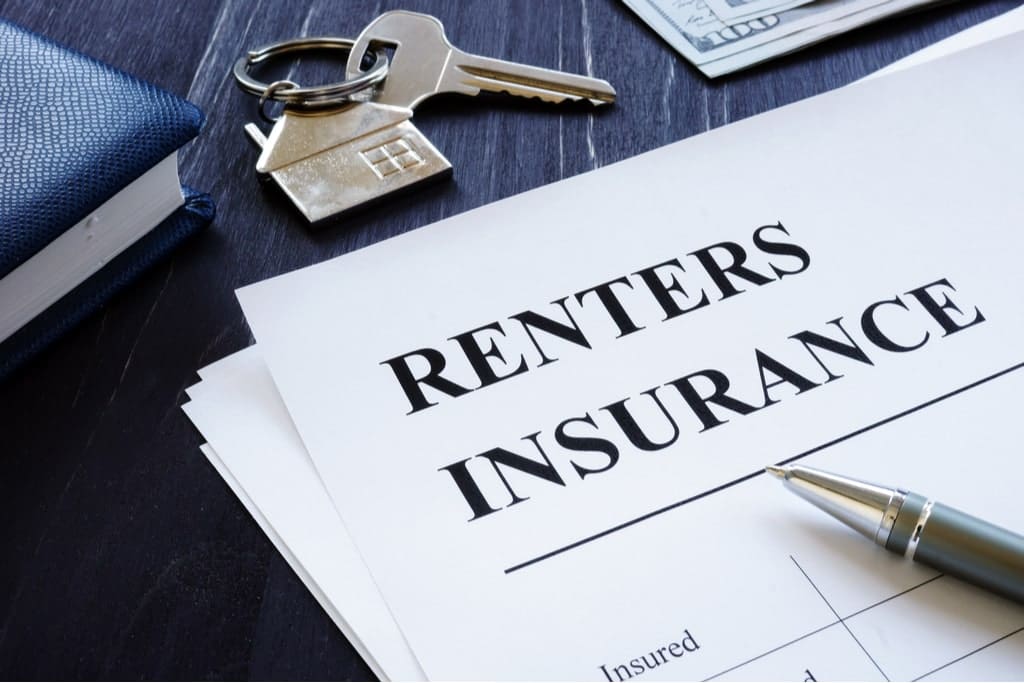Renting your first apartment or moving into a new place is exciting. But along with decorating your space and signing your lease, there’s one thing many people overlook: renters insurance. It might not sound as thrilling as picking out new furniture or hosting a housewarming party, but it plays a huge role in protecting your financial future.
This complete guide will walk you through everything you need to know about renters insurance, from the types of policies to what they cover, what they don’t, and how to make sure you’re getting the right protection without overspending.
Quick Summary
Renters insurance is a cost-effective way to protect your belongings, cover liability risks, and provide support if your rental becomes unlivable. Policies vary from actual cash value to replacement cost coverage, with options that protect against theft, fire, water damage, and liability claims. However, not everything is covered – floods, earthquakes, pests, and high-value items often require additional riders or separate policies.
When choosing a policy, assess the value of your belongings, compare providers, and understand your landlord’s requirements. Most policies cost between $15 and $30 per month, influenced by location, deductible, and coverage choices. Filing a claim involves documenting your loss, notifying your insurer, and working with an adjuster to receive compensation.
For renters, especially young tenants starting out, renters insurance offers peace of mind, financial security, and affordable protection against life’s unexpected surprises.
Types of Renters Insurance Policies
Not all renters insurance policies are the same. While the idea is simple – protect your personal property – there are different types you should know about before signing up.
Actual Cash Value (ACV) Policy
This type of reimbursement for the current value of your belongings, considering depreciation. For example, if your three-year-old laptop gets stolen, you won’t get enough to buy a brand-new one, but rather the value of a three-year-old laptop today.
Replacement Cost Value (RCV) Policy
This option covers the cost of replacing your items with new ones, without factoring in depreciation. While it’s usually more expensive, it gives you stronger protection if you need to replace multiple items at once.
Comprehensive Coverage Policy
A more robust option, comprehensive coverage protects against a wide range of risk including theft, fire, smoke damage, vandalism, and certain water damages. It’s ideal if you want peace of mind for almost every situation.
Coverage Options Explained
Renters insurance can sound confusing, but breaking down coverage makes it easier.
Personal Property Coverage
This is the main reason most people buy renters insurance. It protects your belongings like clothes, electronics, and furniture against risks like theft or fire.
Liability Protection
If someone is injured while visiting your apartment or if you accidentally damage someone else’s property, liability coverage steps in. Without it, you could face significant out-of-pocket expenses.
Loss of Use Coverage
If your rental becomes uninhabitable due to a covered event (like fire or smoke damage), this coverage pays for temporary housing, meals, and other expenses while you’re displaced.
Medical Payments to Others
A smaller but useful coverage that helps pay medical bills if a guest is injured in your rental, regardless of who’s at fault.
Benefits of Renters Insurance
Renters insurance is often inexpensive but provides significant benefits.
- Financial Security – Protects you from having to replace your belongings out-of-pocket after an unexpected event.
- Peace of Mind – Knowing you’re covered for accident or theft reduces stress.
- Liability Protection – Shields you from lawsuits or medical costs if there is any emergency or someone is injured in your space.
- Temporary Housing Costs – Helps when your rental is uninhabitable.
- Affordable Premiums – Many policies cost less than a daily cup of coffee.
Common Exclusions in Policies
It’s important to understand what renters insurance doesn’t cover, so you aren’t caught off guard.
- Flood damage (often requires separate flood insurance)
- Earthquake damage (coverage may be added as a rider in some states)
- Intentional acts (like vandalism by the policyholder)
- High-value items such as jewelry, art, or collectibles (may need additional riders)
- Pest infestations like bed bugs or rodents
How to Choose the Right Policy
Finding the right renters insurance comes down to evaluating your lifestyle, budget, and needs.
Assess Your Belongings
Make an inventory of your belongings and estimate their total value. This helps you decide how much coverage to buy.
Compare Policies and Providers
Don’t settle for the first quote. Compare different insurers and check reviews, financial strength, and customer service quality.
Understand Your Lease Requirements
Some landlords require tenant to carry renters insurance as part of the lease agreement. Make sure your policy meets these requirements.
Decide on Coverage Level
Choose between actual cash value and replacement cost coverage depending on your budget and how valuable your belongings are.
Cost Factors and Premiums
Renters insurance is surprisingly affordable, but the cost depends on several factors.
- Location – Living in an area prone to theft, natural disaster, or high crime can increase premium.
- Coverage Amount – The more coverage you need, the higher the cost.
- Deductible – Higher deductibles usually mean lower monthly premiums, but more out-of-pocket costs when you file a claim.
- Credit Score – In some states, insurers use credit scores to determine premiums.
- Add-ons – Riders for jewelry, electronics, or earthquake coverage can raise your rate.
On average, renters insurance costs between $15 and $30 per month, depending on your choices.
Filing a Claim Process
Knowing how to file a claim ensures you get reimbursed quickly when something goes wrong.
Step 1: Document the Loss
Take photos, videos, and make a detailed list of damaged or stolen items.
Step 2: Notify Your Insurance Company
Contact your insurer as soon as possible after the event to start the claim process.
Step 3: Complete the Claim Form
Provide all required information, including proof of loss, receipts, and police reports if applicable.
Step 4: Work with the Adjuster
An insurance adjuster may visit your rental to assess the damages.
Step 5: Receive Payment
Once approved, the insurance company issues payment based on your coverage type – either actual cash value or replacement cost.





